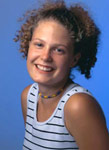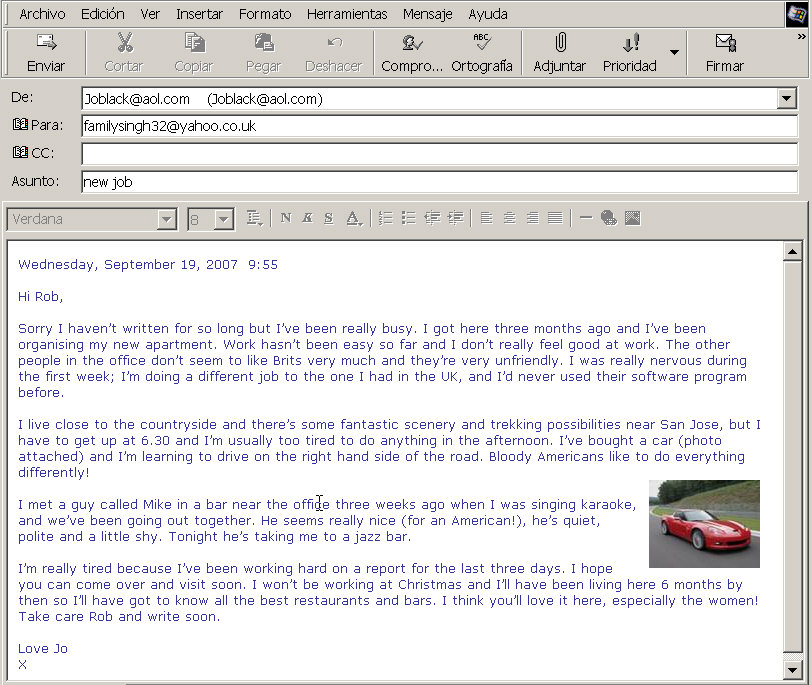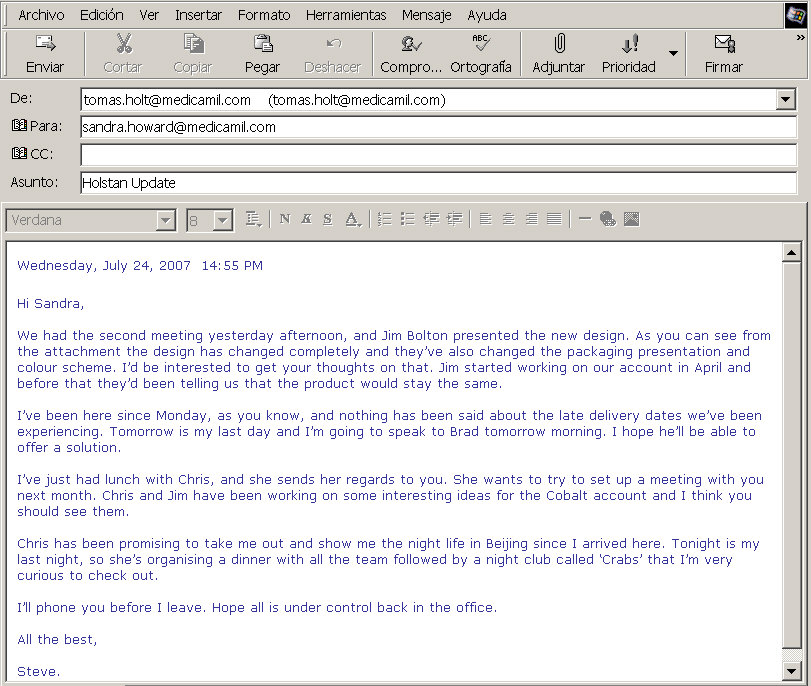
![]() *Cada
Lección consta de varias páginas.
*Cada
Lección consta de varias páginas.
Encontrarás el enlace para acceder a la siguiente al final de la página.
Consulta nuestros
Consejos para aprender y mejorar en inglés.
|
 |
"It does not matter how slowly you go as
long as you do not stop."
Confucius |
![]() Read and listen to the following emails and answer the questions.
Read and listen to the following emails and answer the questions.
|
*Si no puedes visualizar a tu izquierda el control de audio o tienes
problemas con el mismo haz clic en el Icono de Sonido de la derecha. |
|
*Si tienes problemas para escuchar, consulta las FAQ |
 |
|
 |
 |
![]() Now complete the following questions and answers.
Now complete the following questions and answers.
 |
1. How long
Jo
in San Jose?
 three months. 2. her new job? No, enjoying work very much. 3. nervous during the first week? Because a different job and she their software program before. 4. What time ? At 6.30. 5. What recently? A car. 6. What to do? To drive on the right hand side of the road. 7. How long with Mike? three weeks. 8. Where ? In a bar near her office. 9. Where her tonight? To a jazz bar. 10. tired? Because . |
![]() Now do the same with the following email.
Now do the same with the following email.
 |
|
 |
 |
![]() Now complete the following questions and answers.
Now complete the following questions and answers.
 |
1. When
Steve
his second meeting?
 Yesterday afternoon. 2. What they ? The design, the packaging presentation and colour scheme. 3. How long in Beijing? Monday 4. What inconveniences Steve’s company ? Late delivery dates. 5. Who Steve about the late delivery dates? Brad. 6. Who Steve just lunch with? Chris. 7. What Chris to Sandra? Her regards. 8. How long Chris to show Steve the night life in Beijing? he arrived. 9. What Chris ? Dinner with all the team followed by a nightclub. 10. What Steve before he leaves? He’ll phone Chris |
![]() Listen to check your answers.
Listen to check your answers.
 Writing a formal email Writing a formal emailHere are some formal expressions you can use when writing a formal email.
How to begin your email: |
![]() Complete the verb tense table below with the following examples from the emails. Follow the
examples.
Complete the verb tense table below with the following examples from the emails. Follow the
examples.
|
|
 |
||||
|
Simple
|
Continuous
|
|||
| Present | ||||
| Past | ||||
| Future | ||||
| Present perfect | ||||
| Past perfect | ||||
| Future perfect |
 Present
Simple vs Present Continuous: Present
Simple vs Present Continuous:
PRESENT SIMPLE |
La Mansión del Inglés. https://www.mansioningles.com
© Copyright La Mansión del Inglés C.B. Todos los derechos reservados.

¿Cómo puedo desactivar el bloqueo de anuncios en La Mansión del Inglés?


 EXPLICACIONES ADICIONALES: Algunos puntos incluyen explicaciones
teóricas o adicionales que te permitirán una mejor comprensión sobre
diferentes puntos gramaticales, de vocabulario, pronunciación, etc.
que se tratan a lo largo del curso. Distinguirás las explicaciones
por su icono y por aparecer en un color verde.
EXPLICACIONES ADICIONALES: Algunos puntos incluyen explicaciones
teóricas o adicionales que te permitirán una mejor comprensión sobre
diferentes puntos gramaticales, de vocabulario, pronunciación, etc.
que se tratan a lo largo del curso. Distinguirás las explicaciones
por su icono y por aparecer en un color verde.

